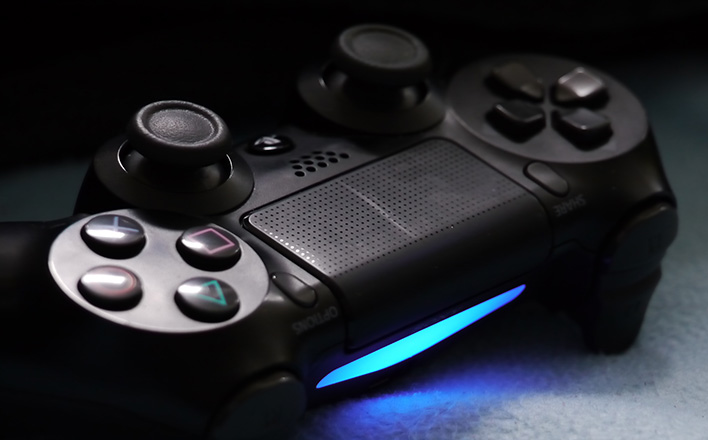2020 hasn’t been a great year for most people, but it’s still a very exciting time if you’re a fan of video games. That’s because as the year draws to a close, probably somewhere close to Christmas, there will be brand new video game consoles on the market for the first time in seven years. Sony has finalized the design of the PlayStation 5, and Microsoft has put the final touches to its next-generation version of the Xbox, the Series X. Both of these new platforms will arrive in a gaming world that’s very different from the one their predecessors were born into.
As great as the new machines might be (and, judging by the quality of the technical specifications and the previews we’ve seen so far, ‘great’ might be an understatement), they have new competition. Google’s Stadia platform is finally gaining a foothold in the market with a business model that’s somewhat akin to the way online slots websites operate. Just as you can log into a slots website and play hundreds of games in one place no matter where you are, you can play high-end video games wherever you are using Google Stadia. Stadia has freed games from the confines of the console just as online slots websites freed slots from the confines of cabinets, and so it would make sense for accessibility and ease of use to be at the forefronts of the minds of any forward-thinking console company’s design team. Surprisingly, it doesn’t appear that’s been the case with Sony.
Prior to the release of the new PlayStation’s design, Sony teased the market with the publication of pictures of the console’s new controller. It marked the first significant redesign of the PlayStation controller since the addition of analog buttons twenty years ago, and a total rethink of what a PlayStation controller looked like. As with anything new in the modern age, it didn’t meet with universal acclaim. While some commentators cautiously welcomed its haptic feedback capabilities, the chunky design was heavily criticized in some quarters. Most of the criticism was based on the fact that it looks somewhat unwieldy and uncomfortable to hold compared to the controllers we use now. The same people who criticized it expressed their hope that the current-gen controllers would work when plugged into the new hardware. We have a little piece of good news for those people – but the news comes with a large caveat.
The good news is that your existing PlayStation controller, along with any accessories you’ve bought to go with it, will function with the PlayStation 5. The machine will recognize them when you plug them in, and you’ll be able to use them to play the games you already own. The key here is that it will only work on the games you already own, and won’t work on anything you buy specifically for your new console. That’s because, for reasons best known to themselves, Sony has decided to make the PS4 controller incompatible with any games designed for the PS5. You’ll be able to play (most of) your PS4 games on your new console, and you can use your old controller to play them, but the moment you buy anything brand new and designed specifically for your PS5, you’ll find your controller does nothing.
This would make more sense if the PS5 controller had any significant functions beyond those that the PS4 controller provides, but as far as we know it, it doesn’t. There is enhanced haptic feedback, but that can be turned off, and it’s integral to the way games are played. The buttons are the same, and the way those buttons work is the same. As the PS4 controller will work when plugged into the PS5 console, on the surface, there appears to be no reason why it couldn’t be allowed to continue working for the next generation of games. This probably won’t be a significant issue for the majority of players as all new consoles come with new controllers, but PlayStation enthusiasts have become accustomed to being able to use their old controllers as backups when their newer ones break. Apparently, that’s no longer going to be an option.
Those of you who have been playing with Sony’s consoles for a long time might recall a similar issue arising in the move from the PS3 to the PS4. For a time, it was impossible to use PS3 controllers on the newer console. After complaints from customers, Sony eventually issued a software patch that resolved the issues and recognized the older controllers. This puts them at odds with Microsoft, who have already promised that all existing Xbox One controllers will work on the Xbox Series X with no limitations. At the core of the issue is the fact that if you want to play games with or against your friends – which the majority of console owners do – additional controllers will now have to be purchased as opposed to being able to hand them one of your cast-offs. New hardware is always expensive, and we’ve seen some suggestions that each new PlayStation controller will cost around $100. When you’ve already invested around $500 on the machine, that’s a steep additional fee.
We may not fully understand why this decision has been taken until we’ve had the opportunity to play the PS5 with our own hands, and feel the difference between the old controller and the new one. There have been some suggestions that “Astro’s Playroom,” a game that’s currently scheduled to be packaged with all new PlayStation consoles, has been designed almost as a showcase and tutorial to help players get to grips with the full functionality of the controllers. Perhaps there’s more to the new haptic feedback features than we realize. Maybe the adaptive triggers are a drastic upgrade on the shoulder triggers we’ve already become accustomed to. We’re just going to have to wait and see. In the meantime, if you’re in the process of putting together a budget to buy a new Sony PlayStation on the day of its release, factor in another hundred dollars if you want to play two-player games. Your existing controllers aren’t going to cut the mustard.










